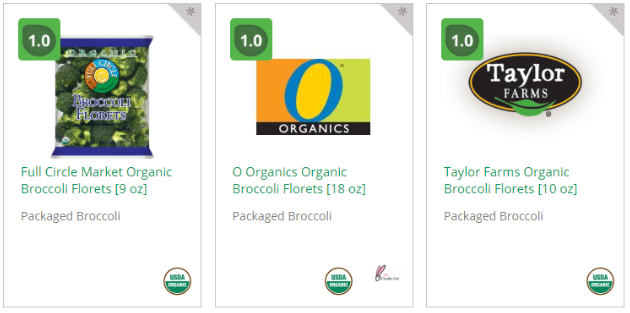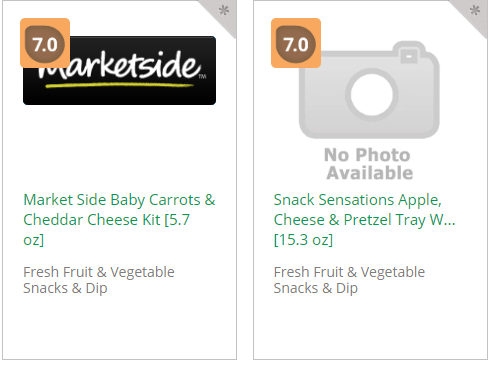No one wants their fresh, healthy salad drizzled with pesticide.
Environmental toxins, specifically pesticides and herbicides sprayed on foods, are increasingly under scrutiny as contributors to many chronic health issues including food sensitivity, autism, attention deficit, cancer, obesity, diabetes, Parkinson’s and Alzheimer’s.
It’s come to light in the past few years that there is a gap in shared knowledge regarding the effect of these toxic chemicals on our health.
Glyphosate is one of the most heavily used agricultural pesticides.
This means that if you want to purchase fruits and vegetables (like strawberries, kale, apples, and tomatoes) that are free of pesticides like glyphosate, it is helpful to use an additional resource for research.
The Environmental Working Group
The Environmental Working Group, or EWG, is a powerful resource for finding fruits, vegetables, and personal cosmetics that are clean and less harmful to both our bodies and the environment.
Let’s use this information as an opportunity to choose better for our bodies.
When we choose to focus on what foods we put in our body, what creams we put on our skin, we are empowering ourselves to make better, healthier decisions that lead to whole, robust lives. For us, and for the Earth.
When you use a resource like the EWG site in conjunction with a dietitian like our own Dana Bosselmann, you’re making a conscious decision to create positive shopping and eating habits that will sustain you and your family for life.
The EWG is helpful for guidance in shopping fruits, veggies, & personal cosmetics.
The Environmental Working Group's mission is to use the power of information to protect your health and the environment. To do so, they created EWG's Healthy Living App, which provides you with easy-to-navigate “hazard ratings” for 120,000 foods, ingredients, and personal care products.
To use the app, simply scan or type in the product you’re researching and then review the EWG rating information to make an educated decision about what you’re putting in your kitchen cabinets.
It’s an easy way to start making your grocery lists a little bit cleaner.
What does an EWG rating mean?
Hazard score key
For food, the EWG assigns ratings based on three criteria: nutrition, ingredient concerns, and processing. Foods are rated from 1 to 10 with 1 being the best and 10 being the worst. You want to aim for products on the lower end, or the “cleaner” end of the spectrum.
Here’s how the EWG scoring algorithm breaks down.
Nutrition. The nutrition scoring algorithm considers multiple factors, including calories, saturated fat, trans fat, sugar, sodium, protein, fiber and fruit, vegetable and nut content.
Ingredient concerns. The ingredient concerns algorithm focuses on factors such as the likely presence of key contaminants, pesticides, hormones and antibiotics, and the health implications of certain food additives.
Processing. The processing score reflects EWG's best estimate of the extent to which a particular food has been processed. Scoring factors include modification of individual ingredients from whole foods and the number of artificial ingredients.
Data score key
The data availability rating you’ll see is the scope of ingredient safety data, and the number of studies available in the open scientific literature. Basically, it tells you how much research has been done on these ingredients that support the EWG hazard rating.
How does your current grocery list perform using EWG ratings?
Check out these ratings on packaged broccoli - these are all rated “1” which is fantastic! That means these are great buying choices for your family:

Photo Credit: EWG
What about a package of your favorite fruit and cheese snack? How does the EWG rate it?

Photo Credit: EWG
You might think that eating a snack of baby carrots and cheddar cheese is relatively clean and healthy, but the EWG rates Marketside’s package as a “7”, which is very high on dirty scale. With this information, you could research snacks like this and purchase a product with a much lower, cleaner score.
Avoid the “dirty” produce and start buying “clean”.
You’ve heard of “clean eating”? This takes it to another level. Our favorite nutritional resource right now is the EWG’s 2019 Shopper's Guide to Pesticides in Produce™. This guide was designed to help you shop healthier and smarter and avoid potentially harmful ingredients, pesticides, and herbicides.
"Environmental Working Group (EWG) is worth supporting as the most diligent unbiased researchers of potentially harmful chemicals we are exposed to everyday. Monitor their Annual Dirty Dozen and Clean 15 lists to understand which produce is the most contaminated. Buy organic or grow your own for the Dirty Dozen. Investment now can save decades of disease and disability." - Dr. Susan Wilder, MD, IFMCP, LifeScape Premier
You can get your free guide here.
Taking the time to check for yourself is an empowering way to take control of your health.
Use resources like EWG and registered dietitians to guide you towards nourishment that works for you. At the end of the day, we all want to feel empowered to make the best choices we can for our bodies.
In addition to using fabulous resources like the EWG, there’s another way to take control of your nutritional needs: scheduling a nutritional consultation with LifeScape’s Functional Dietitian.
Before embarking on any changes in diet or nutrition, our team of the best doctors in Arizona meets with you to understand your personal story and health needs and to complete a comprehensive health evaluation. Let us strategize with you and put you on the right track for optimum nutrition. Schedule your consult today!
Resources:
http://c-hit.org/2017/08/09/as-fda-testing-resumes-of-herbicide-so-does-local-opposition/

